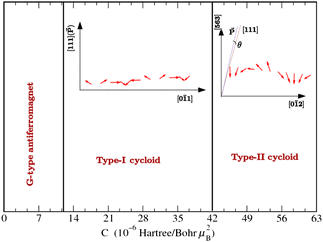Crossref Citations
This article has been cited by the following publications. This list is generated based on data provided by Crossref.
Yang, Yurong
Infante, Ingrid C.
Dkhil, Brahim
and
Bellaiche, Laurent
2015.
Strain effects on multiferroic BiFeO3 films
.
Comptes Rendus. Physique,
Vol. 16,
Issue. 2,
p.
193.
Xu, Bin
Dupé, Bertrand
Xu, Changsong
Xiang, Hongjun
and
Bellaiche, L.
2018.
Revisiting spin cycloids in multiferroic
BiFeO3.
Physical Review B,
Vol. 98,
Issue. 18,
Burns, Stuart R.
Sando, Daniel
Xu, Bin
Dupé, Bertrand
Russell, Lachlan
Deng, Guochu
Clements, Richard
Paull, Oliver H. C.
Seidel, Jan
Bellaiche, Laurent
Valanoor, Nagarajan
and
Ulrich, Clemens
2019.
Expansion of the spin cycloid in multiferroic BiFeO3 thin films.
npj Quantum Materials,
Vol. 4,
Issue. 1,
Meyer, Sebastian
Xu, Bin
Verstraete, Matthieu J.
Bellaiche, Laurent
and
Dupé, Bertrand
2023.
Spin-current driven Dzyaloshinskii-Moriya interaction in multiferroic
BiFeO3
from first principles.
Physical Review B,
Vol. 108,
Issue. 2,
Meisenheimer, Peter
Moore, Guy
Zhou, Shiyu
Zhang, Hongrui
Huang, Xiaoxi
Husain, Sajid
Chen, Xianzhe
Martin, Lane W.
Persson, Kristin A.
Griffin, Sinéad
Caretta, Lucas
Stevenson, Paul
and
Ramesh, Ramamoorthy
2024.
Switching the spin cycloid in BiFeO3 with an electric field.
Nature Communications,
Vol. 15,
Issue. 1,


